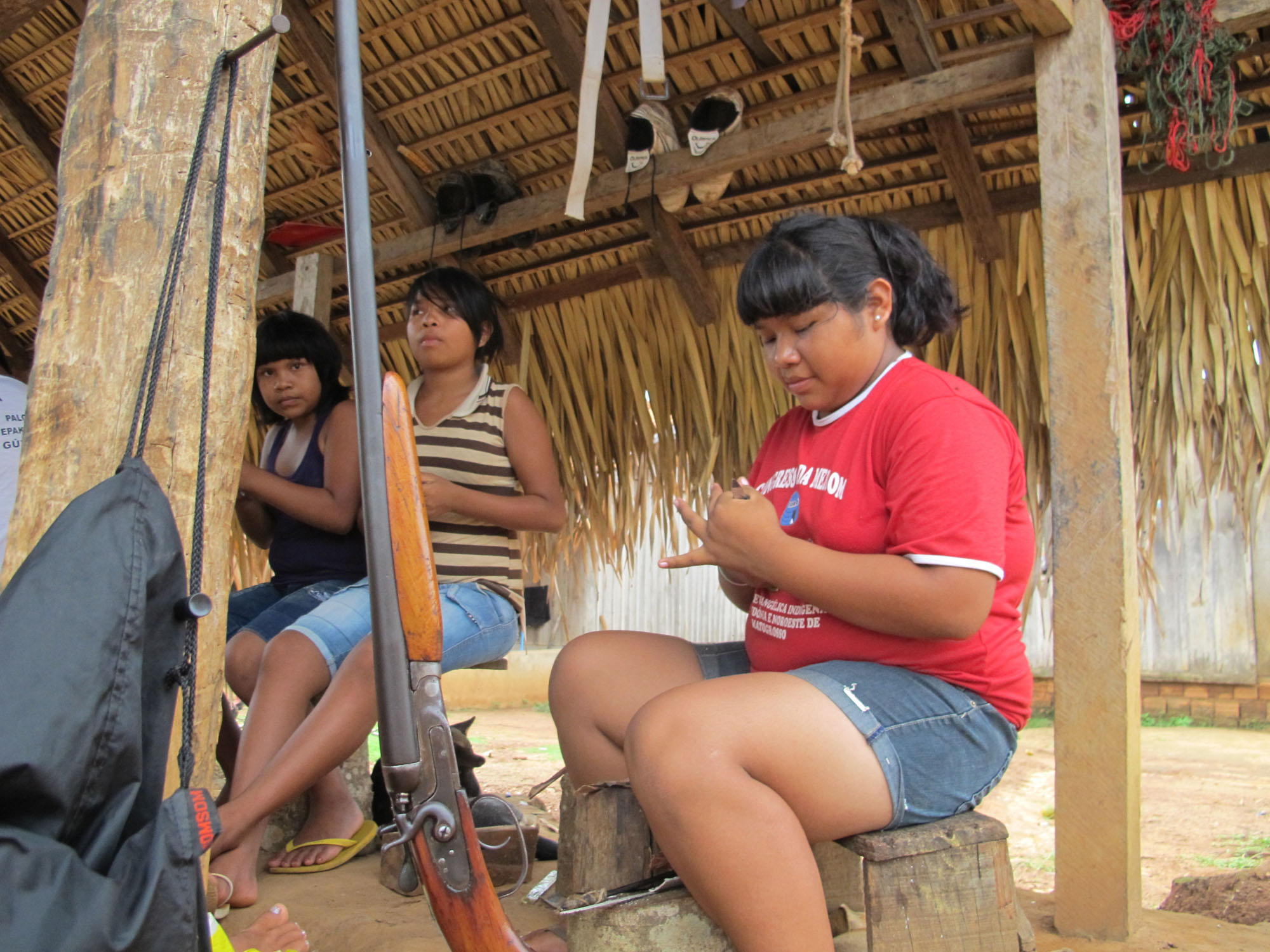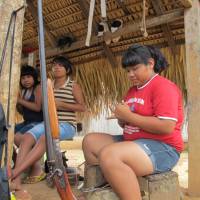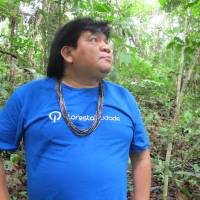As a small boy in the early 1980s, Almir Surui hunted monkeys with a bow and arrow, wore a loincloth and struggled with Brazil's official language, Portuguese.
At 38, he is the techno-savvy, university-educated chief of the Paiter Surui, or "the real people," of the western corner of Brazil.
He can still handle a bow. But Chief Almir Narayamoga Surui says his weapon of choice these days is technology: Android phones to monitor illegal logging, hand-held Global Positioning System devices to map territory, and Google Earth Outreach to show the world what a well-managed forest looks like.
Wielding the tools of the 21st century, the 1,300-member tribe has delved into a complex plan in which governments or companies pay for forest preservation, contributing to a system that, if fully realized, would help end large-scale deforestation. By determining how much carbon is not released if the trees on Surui lands are left standing, the tribe hopes to sell carbon credits internationally to offset greenhouse gas emissions in developed countries.
It is the first time an indigenous group has applied this type of conservation plan, in what could become a model for tribes searching for ways to save their lands. And environmentalists say its development in a swath of Amazonia is due largely to Almir's feverish diplomacy: the 16 trips he has made to the United States, his meetings with tech companies and sit-downs with Wall Street financiers, U.S. senators and the likes of Prince Charles, Britain's heir to the throne.
"I think it's working," said Almir, who is heavyset with a broad, fleshy face and bangs that cover his forehead. "I wouldn't have gone to 33 countries to talk about our culture, our health care, our education and the way things are if it wouldn't work."
The Surui have also become adept at drawing would-be allies to their Rhode Island-sized reserve.
"When we were there, we were blown away," said Josh Knauer, chief executive of the Pittsburgh software company Rhiza, which built one of the user interfaces on the phones the Surui use. "I was pleasantly surprised by how many members of the tribe adapted to the technology, adapted it for their use. And they were adapting it on the fly."
The Surui's efforts to save their forest — and themselves — have taken place in a region of Brazil not usually associated with cutting-edge conservation tactics. People locally like to say that the state of Rondonia is like the Wild West, a place where loggers and settlers penetrate Indian land, where traffickers smuggle cocaine and where hired pistoleros have killed Indians in the way of development.
"Rondonia is the laboratory for everything that can be used to take down the forest," said Ivaneide Bandeira Cardozo, head of the Kaninde indigenous rights group. "And we export these methods to other states."
Until the late 1960s, the Surui were considered "uncontacted," having had little contact with modern Brazil. But then came road building crews, which Surui warriors attacked with bows and arrows. In 1969, the Brazilian government's Indian affairs agency decided it was time to make permanent contact, laying out mirrors, machetes and other trinkets to draw the Surui from the jungle.
"This wasn't the first time in their history that they'd made contact with the outside world, but it was the time that became definitive and lasting," said Vasco van Roosmalen, director of the Amazon Conservation Team, a Brasilia-based group that has worked closely with Almir. "This changed everything for them."
What happened next was a scourge of epidemics — measles, chicken pox and tuberculosis.
"People suffered a lot, and that's why our population fell so much," said Jose Itabira Surui, 68, who is Almir's uncle. "We were 5,000, and we went down to 290 or 300."
Almir grew up in that environment — a toxic atmosphere of deaths, hunger, alcoholism and impending ecological disaster.
Yet there were strong chiefs who instilled the need for ready-to-act young leaders. Almir, the first Surui to study at university, became one of them. But he realized that the old way of doing things, most notably the violent confrontations, was unlikely to bring dividends. He said he was more interested in finding partners with common interests.
"We came to understand that the Surui people alone can't resolve the problems the world is facing," he said.
In 1998, when he was in his early 20s, Almir began meeting with the World Bank's board of directors in Washington. He wanted a development project restructured so the Surui would receive benefits directly, instead of having them filtered through the state bureaucracy. His arguments were persuasive.
Those who have worked with him say part of his appeal is his gift for the theatrical — knowing what will capture the attention of people in Rio, New York or Dubai.
"Walking through the crowds with Almir is like walking with a pop star," said Beto Borges, head of Forest Trends, an environmental group based in Washington that works with the Surui. "All of a sudden, here's an indigenous person from the Amazon. And not only an indigenous person, but he's a chief, wearing this huge headdress with feathers."
In 2007, that's how he strode into Google's headquarters in Mountain View, California. The headdress was a memorable sight, recalled Rebecca Moore, engineering manager of Google Earth Outreach, but it was Almir's proposal that particularly impressed company executives.
"He presented a pretty sophisticated idea of how the Surui people could blend their traditional knowledge with modern technology — tools like Google Earth, the Internet — to literally defend the rain forest," she said. "And we were convinced."
What Almir wanted was a Google alliance to create satellite imagery of the Surui reserve. He also wanted to improve an "ethno-mapping" project in which old battlegrounds, groves of trees, animal breeding areas, hamlets and ancestral burial grounds are catalogued in 3-D.
The Surui have also taken to using phones to record the movement of loggers and settlers into their territory. The video is uploaded to the Internet. The objective, Almir said, is to let the world know what's happening on Surui land. "We want to mobilize public opinion," he said.
One of the chief's most ambitious plans has been the proposal to sell carbon credits, a five-year effort that began with a painstaking audit to determine how much carbon is in the trees on Surui territory. Later this year, the Surui hope to sell those credits to foundations or companies looking to boost their image by paying the tribe to preserve the trees and the carbon they hold.
The long-range goal is for the establishment of a worldwide environmental governance system, in which polluting industries and developed countries would buy credits from the likes of the Surui. Those companies and governments would offset their emissions and meet environmental standards by paying others to ensure that the carbon locked in trees is not released into the atmosphere.
For now, the Surui hope to collect up to $1 million annually, which Almir considers an important start.
"This is the great economic potential that the forest has," he said. "That's why we're trying to make people conscious of all this."





